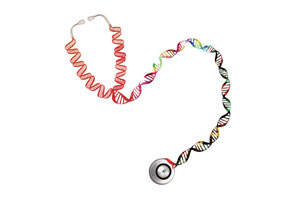 When talking about genetic pre-disposition to a condition, make sure you understand both the increased risk factor and the general risk.As the geneticist at the Ask a Geneticist blog, I get a lot of questions about diseases that run in the family. They usually run along the lines of, "My mother had diabetes, what is my risk for getting it?"
When talking about genetic pre-disposition to a condition, make sure you understand both the increased risk factor and the general risk.As the geneticist at the Ask a Geneticist blog, I get a lot of questions about diseases that run in the family. They usually run along the lines of, "My mother had diabetes, what is my risk for getting it?"
What I try to do in answering these questions is give them a feel for what the disease is, how genes are involved and then give them some links to some reliable websites on the topic. I always try to emphasize that for a lot of diseases, genes are just one part of the story and that speaking with a genetic counselor in person might be a good idea. I also warn them to look very carefully at the risk numbers.
Very often risks are given in how much more likely someone is to get a disease compared to the general public. So, for example, if you have a brother or sister with schizophrenia, then you can be up to 9 times more likely to end up with the disease too. Sounds like a scary number! But it may not be...
If the general risk is 1 in a million, then 9 times is pretty insignificant. It means that your risk is 1 in 110,000 or so. This is worse than the chances of dating a supermodel (1 in 87,000) or of winning the lottery if you buy 50 tickets (1 in 77,000). So if this were the case, a 9 fold increase means you still probably aren't getting the disease.
For schizophrenia, the general risk is 1 in 100. This means that if you have a parent or sibling with the disease, your chances go up to about 1 in 11. Unfortunately 9 times more likely looks pretty significant here...
